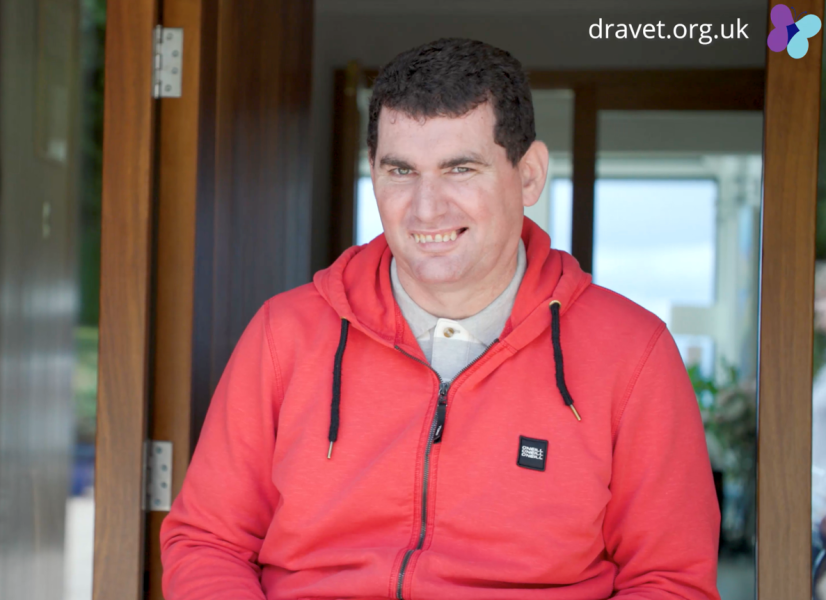What is Dravet Syndrome?
Dravet Syndrome is a rare type of neurological condition, occurring in one in every 15,000 live births in the UK.
The first sign of Dravet Syndrome is childhood epilepsy, with seizures starting in the first year of life. But people with Dravet also experience a collection of other symptoms and conditions. A person with Dravet Syndrome may have:
- treatment-resistant epilepsy
- intellectual disability
- a spectrum of associated conditions (known as ‘comorbidities’), which may include autism, ADHD, behaviours that challenge and difficulties with speech, mobility, eating and sleep.
Although it is life-long and life-limiting, it’s possible for people with Dravet Syndrome to live long, happy and fulfilled lives. In this article, we’ll explore more about the causes of Dravet Syndrome, what to expect from a diagnosis of Dravet, and where to get support.
How does Dravet Syndrome differ from other types of epilepsy?
Unlike many types of epilepsy, Dravet Syndrome is a genetic condition. It’s not caused by something happening to the brain, like a head injury or stroke. Instead, there is a problem with a gene in the brain, something which is there from birth.
As with other forms of epilepsy, people with Dravet Syndrome have seizures. But unlike some other types of epilepsy, Dravet Syndrome also includes a combination of other characteristics, called comorbidities. These can include significant intellectual and physical disabilities.

What causes Dravet Syndrome?
Dravet Syndrome is a problem with the way messages are sent and received in the brain. It occurs when one of the genes in a part of the brain (known as the sodium ion channel) does not work as it should.
The movement of sodium ions in and out of nerve cells helps to control electrical messages in the brain. The faulty ion channel gene stops these messages from working properly, which can cause seizures, intellectual disability and the spectrum of comorbidities that we see in individuals with Dravet.
- More than 85% of people with a clinical diagnosis of Dravet Syndrome have a mutation in the gene known as SCN1A.
- In addition, around 10-15% either have no detected SCN1A mutation or have mutation(s) in genes other than SCN1A.
How can Dravet syndrome be diagnosed?
Diagnosis of Dravet syndrome is based on several factors:
- Clinical history: A full history of seizures, age of onset and development.
- EEG findings: Whilst EEG results are often normal within the first year of life, abnormalities may become evident from approximately 18 months old.
- Genetic testing: 80% of children with Dravet syndrome have a genetic mutation in a specific section called SCN1A. A blood test can be used to confirm whether or not the individual has the SCN1A mutation or not. However, 20% of people with Dravet do not have this mutation, therefore, it's absence does not rule out a diagnosis.
What is the effect of Dravet Syndrome?
People with Dravet Syndrome typically experience multiple, frequent, treatment-resistant and often prolonged seizures. But epilepsy is just one part of Dravet Syndrome. After the first year of life, the child’s development typically slows down or regresses (goes backwards), sometimes severely. Alongside continuing seizures, a wide range of conditions (comorbidities) and issues may arise.
Every child or adult with Dravet Syndrome is different. But for everyone with Dravet Syndrome, the condition is complex, symptoms can be interrelated, and seizures can be highly unpredictable.

Does Dravet Syndrome affect life expectancy?
Sadly, children with Dravet Syndrome are more likely than other children to die prematurely. This is because of the increased risk of SUDEP (sudden unexpected death in epilepsy) and of very prolonged seizures known as ‘status epilepticus’.
Having said that, children with Dravet Syndrome have an 85% chance of surviving into adulthood. Once they reach adulthood, the frequency of seizures often seems to decrease, as do the risks of premature death. The oldest adult known to have a Dravet diagnosis in the UK is currently in his 70s.
Are there treatments available and is there a cure?
There is currently no cure for Dravet Syndrome. But there is lots of research going on into new medicines and treatments. It’s an exciting time, with scientists investigating gene-based therapies that seek to ‘fix’ the faulty gene causing Dravet.
Unfortunately, in terms of seizures, Dravet Syndrome is one of the most treatment-resistant types of epilepsy. New medicines, such as Epidyolex (cannabidiol) and Fenfluramine may be an option for some, but these medicines aren't suitable for everyone with Dravet Syndrome and responses to the treatment vary.
Recognising and treating comorbidities associated with Dravet Syndrome can be challenging. While improved seizure control can often lead to improvements in comorbidities, this is not always the case. Depending on the comorbidity involved, there are different therapies and approaches available.
If you are caring for someone with Dravet Syndrome, your medical team and other professionals will help you to find the best treatment, therapy and educational plan to achieve a good quality of life.

